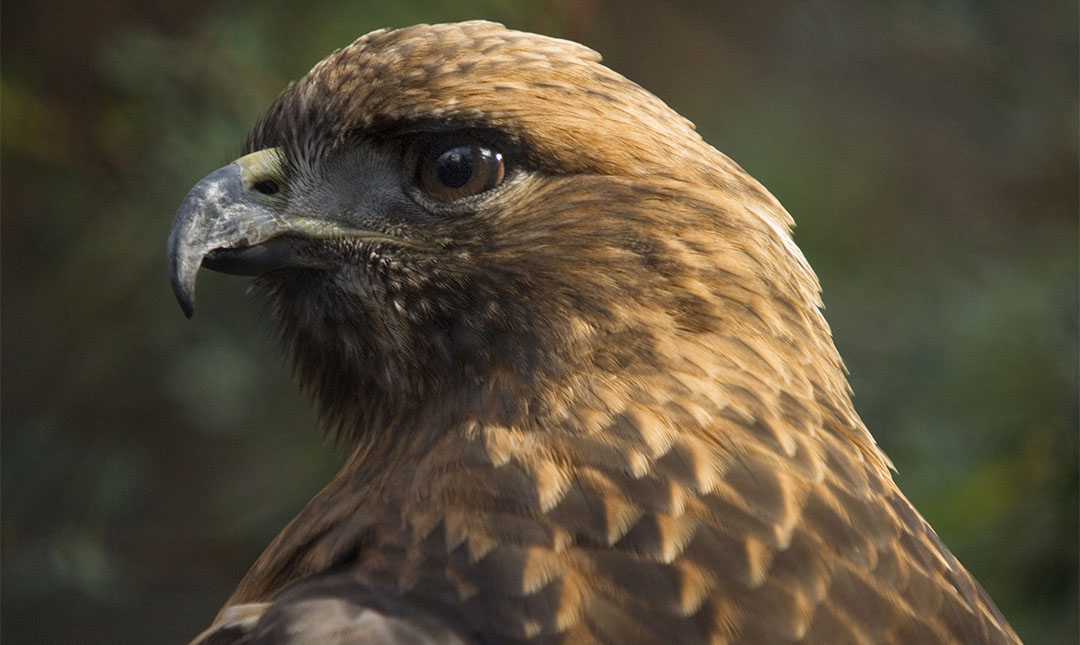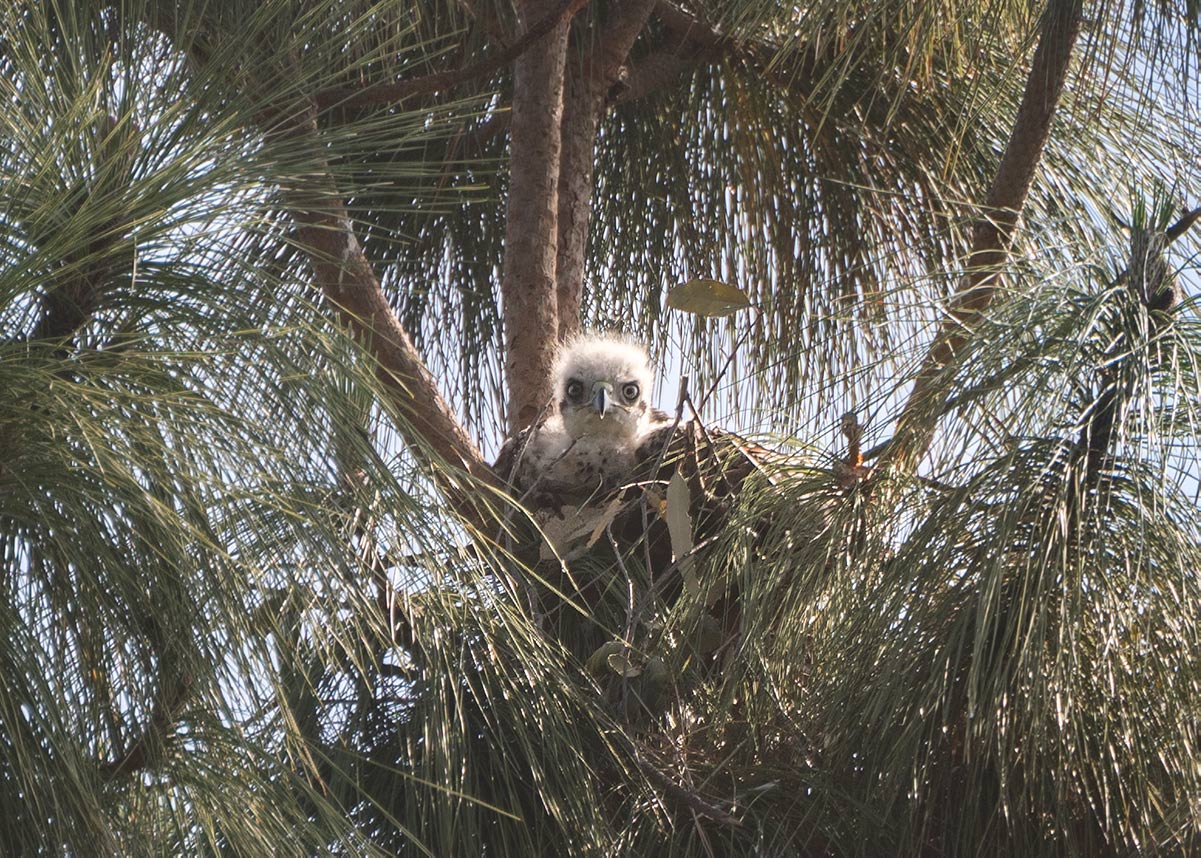About
Red-tailed hawks are one of the best-known birds of prey. Among the largest hawk species, they can be found across North America and are often seen soaring in and over the Zoo. The easiest way to identify these hawks is to focus on their tail feathers, which are distinctly reddish-brown in the sun.
Hawks hunt during the day and use their keen eyesight to detect prey from an elevated perch or while in flight. They can attain speeds of 20 to 40 miles per hour, accelerating up to 120 miles per hour when they dive after prey. Large talons are used to grasp and kill their quarry, then carry it back to the nest. Red-tailed hawks sometimes hunt in pairs and work together to block off their prey’s escape route. An individual hawk kills at least 1,000 rodents in a year and plays an important role in controlling rodent populations.
Like eagles, red-tailed hawks engage in breathtaking courtship displays. The pair clasps talons and falls, spiraling downward, breaking apart just before hitting the ground. The female begins constructing a nest with the male bringing her building materials, mostly sticks. The nest can be three feet wide and three feet high. It is usually located 35–100 feet up in the forked branches of a tall tree and can be used for multiple years. Nests in urban areas can be situated on buildings and towers. The female does most of the incubating for the two or three eggs, while the male delivers her meals. Eggs hatch in about 30 days, and the chicks’ flight feathers grow in after about six weeks. They stay with their parents an additional two months while learning to fly and hunt. Prior to the Migratory Bird Treaty Act, originally signed in 1918 and expanded in 1972, many states paid bounties for hawks to be killed because people were under the mistaken belief that the birds were a threat to livestock. Populations have significantly increased over the past 40 years, but they are still at risk from poisoning that occurs when they consume prey animals that have ingested rodenticides or been exposed to pesticides.



Habitat
Red-tailed hawks are found throughout North America. They prefer open habitat but have become increasingly acclimated to an urban habitat, nesting on buildings in downtown areas and foraging in parks.
Diet
Carnivorous, 85 percent of their diet is rodents, including voles, squirrels, rats, and mice. They will also eat pigeons, rabbits, hares, rattlesnakes, bull snakes, and lizards.
Physical Characteristics
Body length is between 18 and 26 inches, with females approximately 25 percent larger than males. Weight is two to four pounds, and wingspan is 45 to 56 inches. Lifespan is 17 to 25 years.
LOCATION WITHIN THE ZOO
You may see this bird take flight in the World of Birds Show.



